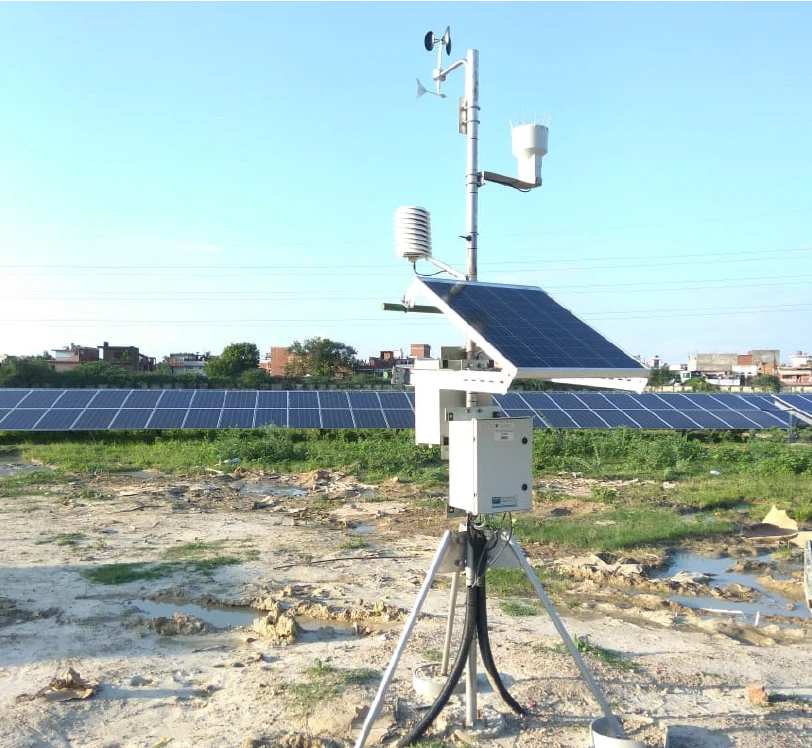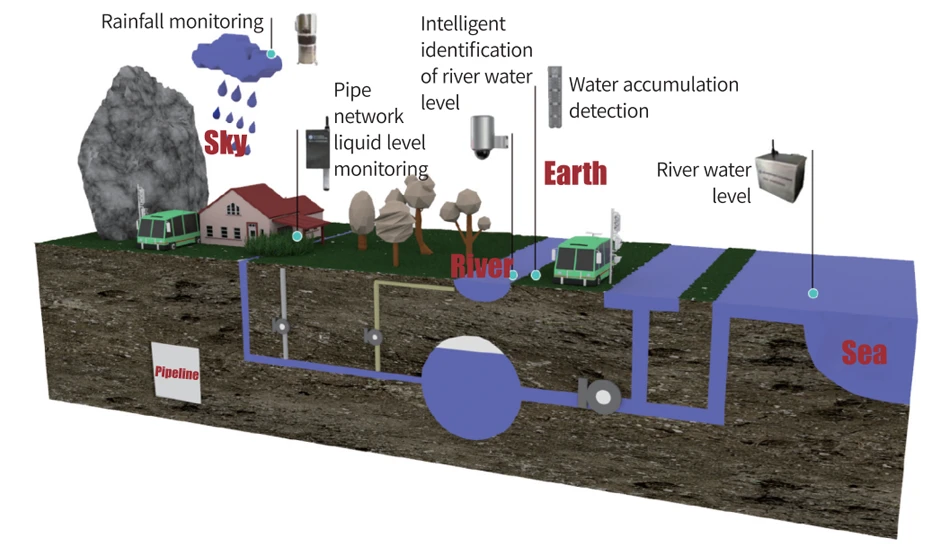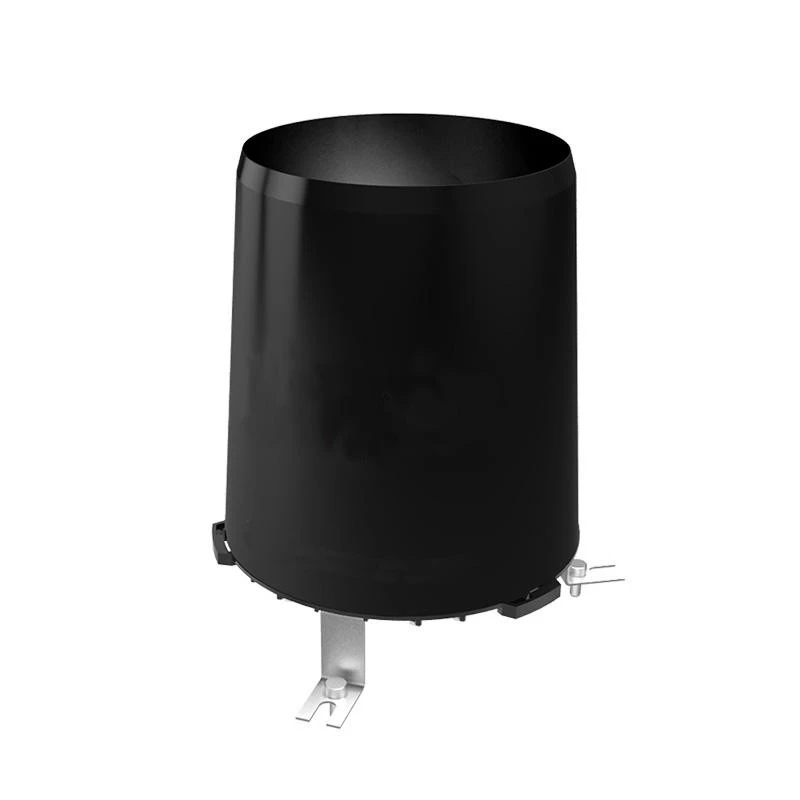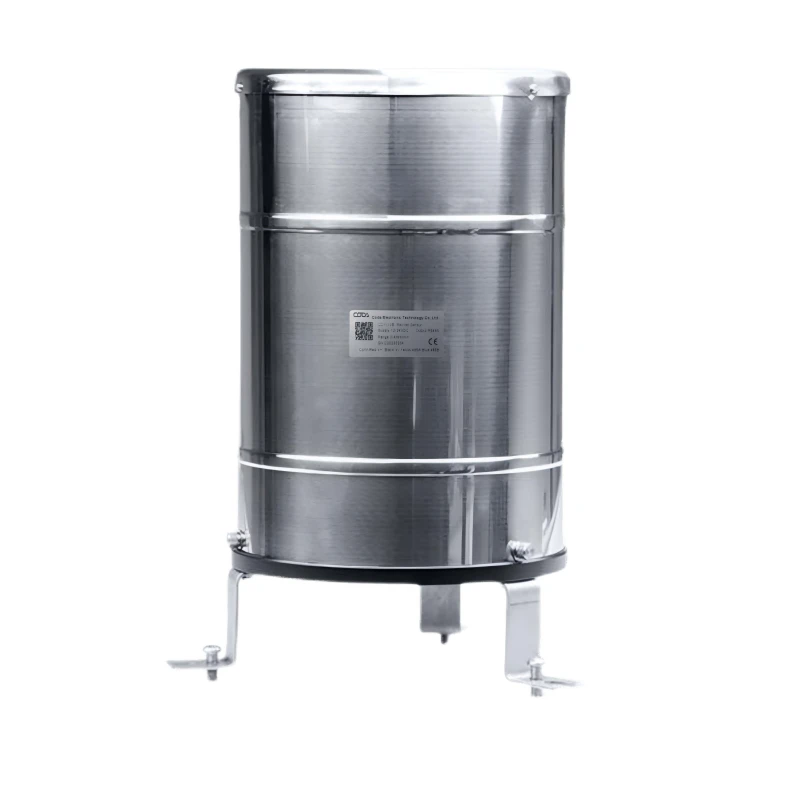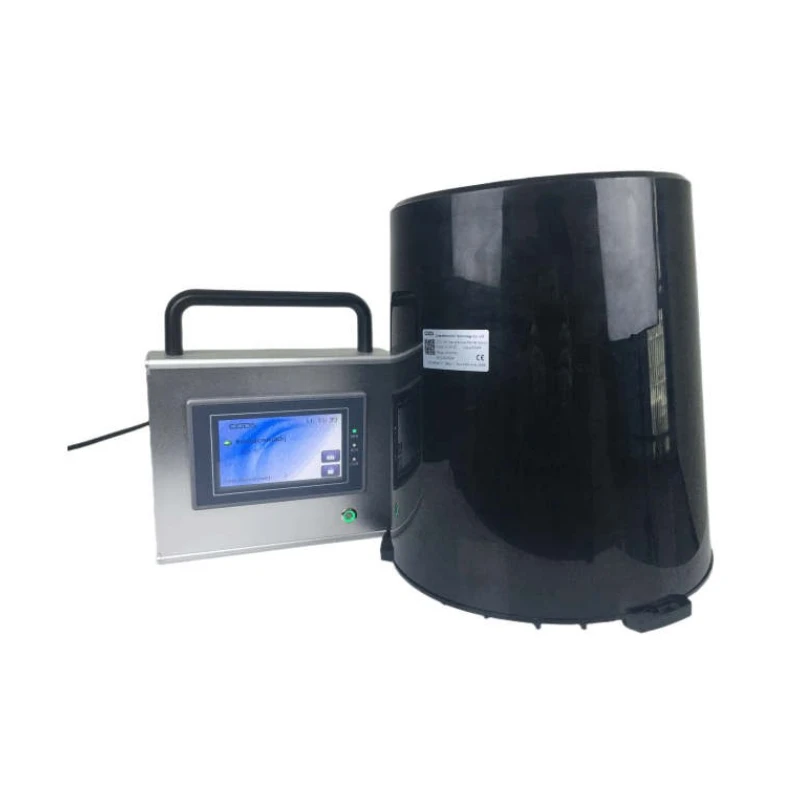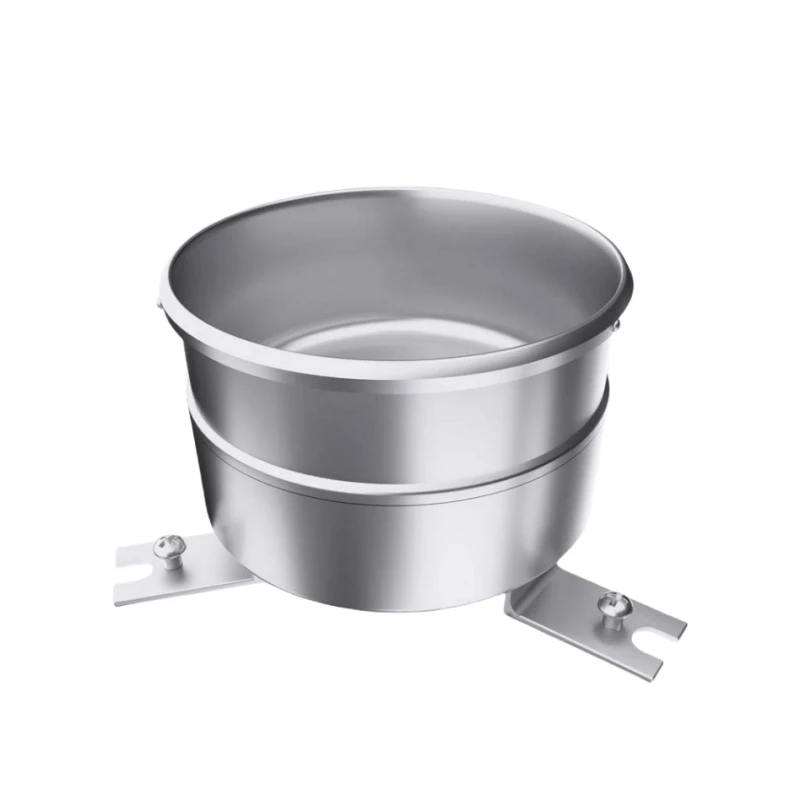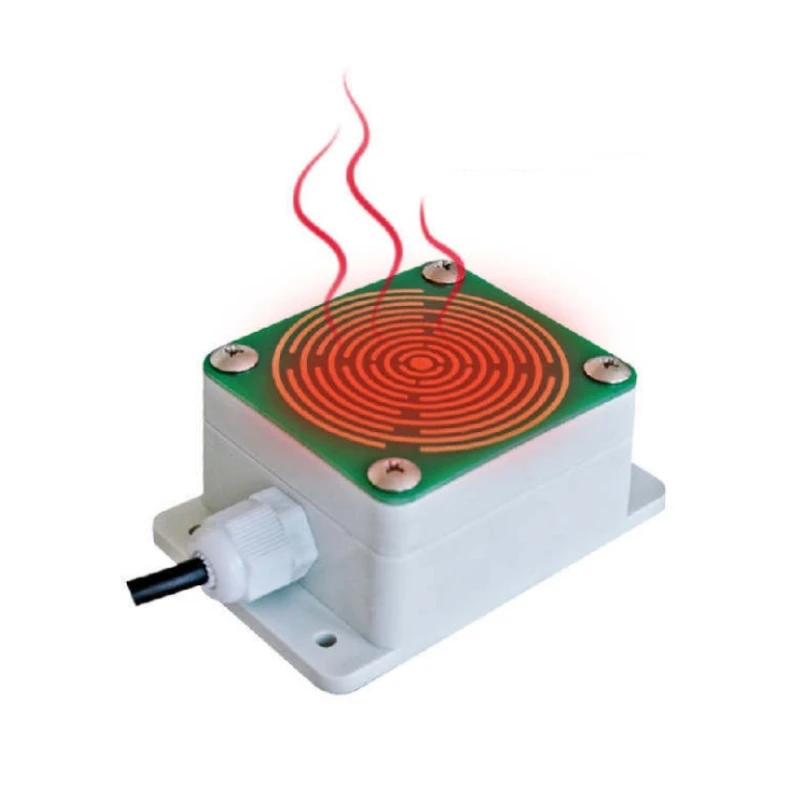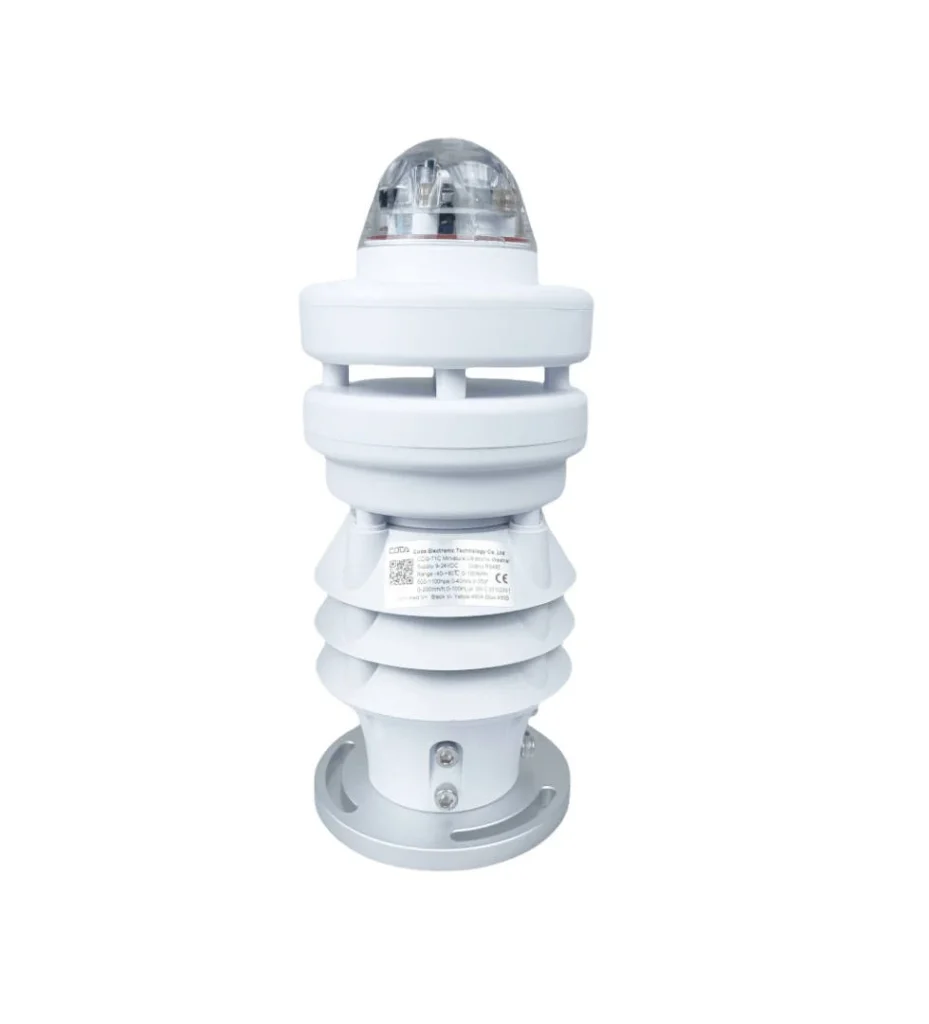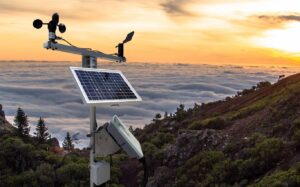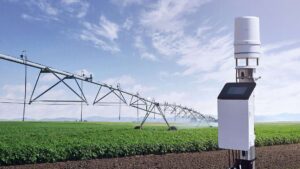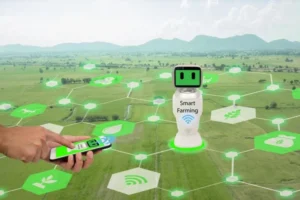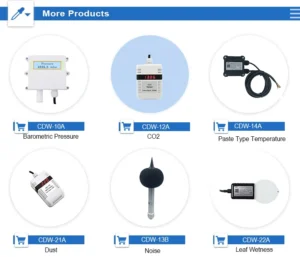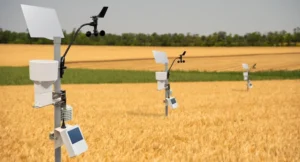An automated system for monitoring rainfall
The automatic rain and snow monitoring system primarily employs rain sensors and rain and snow sensors to track precipitation. A rain sensor is a hydrological and meteorological instrument designed to measure natural rainfall. It converts rainfall into a switchable form of information output, facilitating the transmission, processing, recording, and display of data to meet various informational needs.
Intense rainfall is a type of severe weather event that frequently leads to flooding and significant soil erosion, causing substantial economic damage, including infrastructure failures, breaches in embankments, and crop inundation. This is particularly problematic in low-lying and geographically isolated regions, where rainwater cannot be swiftly drained, leading to waterlogged farmland and overly saturated soil, which may trigger further geological hazards.
Meteorological services are crucial in monitoring and issuing warnings for weather-related disasters. The China Meteorological Administration convened a special video meeting, emphasizing the need for robust weather monitoring, forecasting, and early warning services. They stressed the importance of enhancing real-time monitoring, analysis, and short-term localized forecasting and warnings for sudden severe weather, while also advocating for the application of research-driven business outcomes.
Rainfall Monitoring System
The Rainfall Monitoring System is an automated observation tool designed to gather ground-level rainfall data. It precisely logs precipitation every minute and promptly transmits the information to the recorder, enabling real-time monitoring of rainfall.
The installation of an automated rainfall monitoring station can significantly aid in the prevention and management of natural disasters, particularly by minimizing the harm these events inflict on human lives and property.
The rainfall sensor serves as a hydrological and meteorological tool designed to measure natural precipitation. It transforms rainfall data into an output expressed as a switch quantity, facilitating the transmission, processing, recording, and display of information.
These monitoring stations are capable of continuously observing rainfall conditions online, 24/7, providing essential insights into flood-prone areas, issuing early warnings for safety incidents, and supporting flood control and prevention efforts. The automatic meteorological monitoring system for rainfall can assess flow rates, water levels, and rainfall in rivers, lakes, tides, reservoir gates, and groundwater pipeline networks, among other areas.
automatic rainfall station
An automatic rainfall monitoring station is a self-operating device designed to record rainfall data without human intervention.We can make it function as a standalone, portable self – recording station. Moreover, we can integrate it with a system that supports either wired or wireless communication modules to create a network of rainfall stations.
Coda’s independent research and development efforts have led to the creation of a real-time online monitoring system for water levels and rainfall. This system can simultaneously fulfill meteorological and water level monitoring objectives, including video surveillance. It provides real-time data on water level height, wind speed, wind direction, and more. When water levels approach critical thresholds or wind speeds become excessive, the system automatically sends remote alerts to management, ensuring early and timely warnings. This technology plays a crucial role in disaster prevention and mitigation strategy development for sectors such as water conservation, agriculture, urban planning, and transportation. Additionally, it holds significant value for studying storm characteristics.
Main products
CDY-12A Economical Tipping Bucket Rainfall
The CDY-12A tipping bucket rain sensor is a device designed to measure the volume of natural rainfall. This sensor translates rainfall into a pulse number output, catering to users’ requirements for data transmission, processing, recording, and display. It finds extensive application in meteorological and hydrological stations, agriculture, forestry, national defense, and field monitoring stations. Additionally, it supplies essential data for flood management in factories, water supply systems, and reservoir water management. The CDY-12A Economic tipping bucket rain sensor is another variant available for similar purposes.
CDY-10B Metal Economical Tipping Bucket Rainfall
The CDY-10B economic tipping bucket rain sensor serves as a hydrological and meteorological tool for quantifying rainfall and transforming it into a pulse signal output. It features an insect-proof net to avert nozzle blockages and includes an integrated horizontal bubble. This sensor is applicable in fields such as meteorology, hydrology, agriculture, forestry, and field monitoring stations. When paired with a data logger, it can assess rainfall, its intensity, and the duration of rainfall events.
CDY-18B Automatic Rainfall Station
The CDY-18B automatic rainfall station is designed to measure and record rainfall data efficiently. It features a display screen that provides real-time information about rainfall, as well as the current time and date. Equipped with a large memory chip, the station can automatically store weather data for at least one year, enabling data analysis through a connected data logger. For rainfall monitoring, the station supports integration with either CDY-10B or CDY-12A rainfall sensors.
CDY-14B Evaporation Sensor
The CDY-14B evaporation sensor utilizes a high-precision weighing principle to determine the liquid weight in an evaporation dish, calculating evaporation loss based on the difference in liquid weight before and after measurement. Constructed from high-quality stainless steel, the evaporation dish ensures measurement accuracy with excellent resistance to corrosion and erosion. We can make this sensor compatible with automatic weather stations or specialized evaporation recorders. It suits well for applications in meteorology, agriculture, forestry, animal husbandry, soil improvement, irrigation strategy development, and moisture resource research.
CDY-11A Rain & Snow Sensor
The CDY-11A rain and snow sensor is engineered for sensitive detection of rain and snow events. It features an annular conductor sensing plate on its surface to detect precipitation. An optional automatic heating function for snow and ice melting enhances its performance in extreme conditions. Upon detecting rain or snow, the sensor generates a switch signal output, allowing for responsive monitoring in diverse weather scenarios.
CDQ-T1C Automatic Integrated Weather Station
The CDQ-T1C ultrasonic meteorological instrument is a compact, self-developed weather station designed for comprehensive weather parameter measurement. With a low-energy consumption chip requiring only 1.7W, it is particularly suitable for solar- or battery-powered installations. Optimized construction techniques contribute to its compact design.
Conclusion
Looking ahead, Coda Technology remains committed to advancing meteorological research and fostering innovative applications in the field. The company will continue to prioritize refinements in weather forecasting accuracy while promoting the integration of intelligent meteorology into various industries. With the evolution of new-generation information technology, future cities are set to embrace smart solutions. Coda Technology will explore applications of smart meteorology to support the development of intelligent cities by delivering comprehensive meteorological services. These efforts aim to ensure effective urban planning and facilitate the growth of sustainable, high-quality smart cities.
